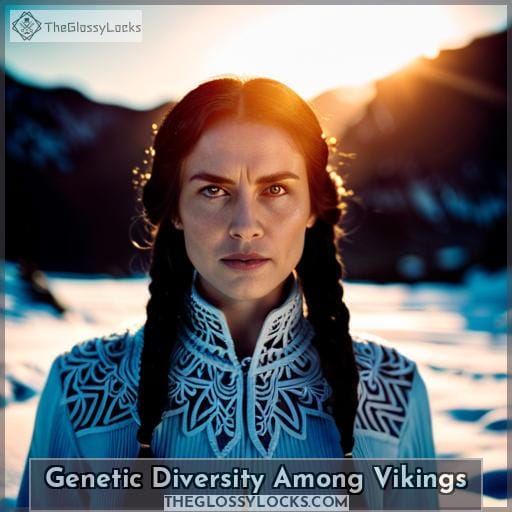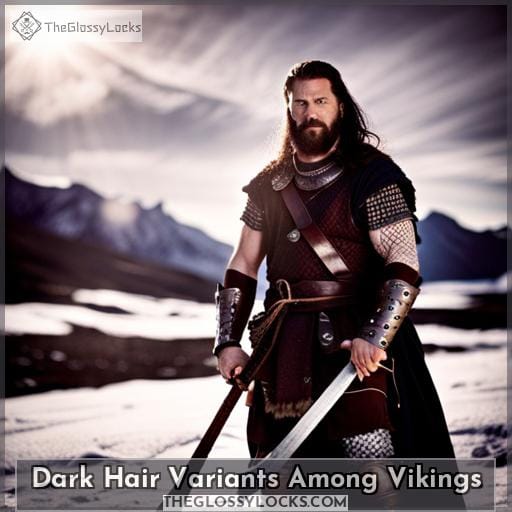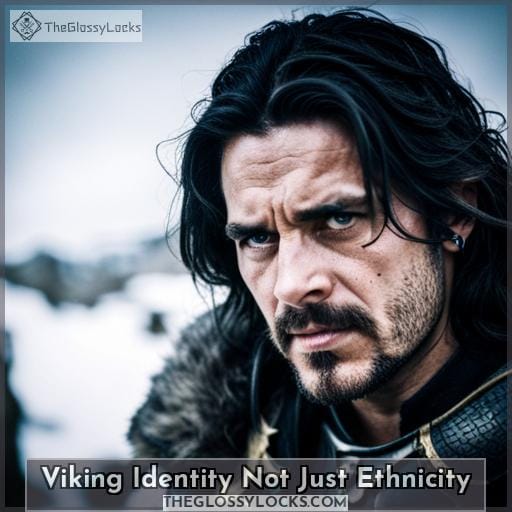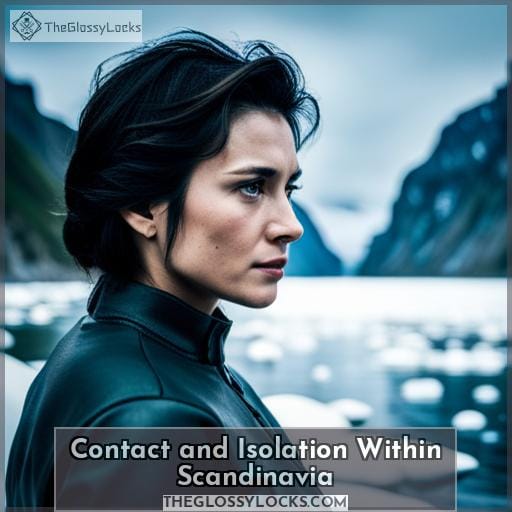This site is supported by our readers. We may earn a commission, at no cost to you, if you purchase through links.
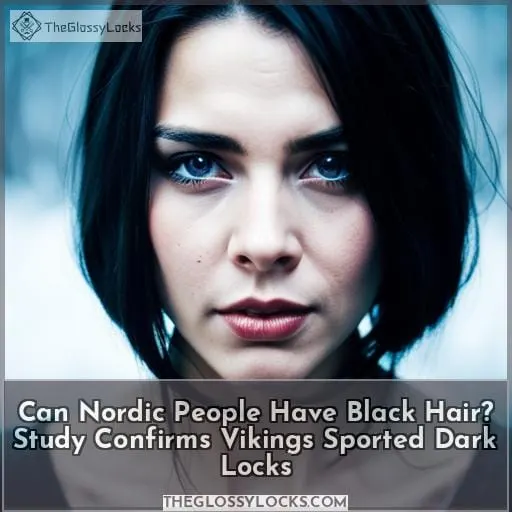 Have you ever pictured Vikings with long blond braids flowing in the wind? Turns out, your mental image might be off.
Have you ever pictured Vikings with long blond braids flowing in the wind? Turns out, your mental image might be off.
Yep, those fierce Norse warriors raiding medieval Europe weren’t all towheaded Scandinavians. See, Vikings came from all over – not just modern-day Norway and Sweden. Through trading and raiding, Vikings spread their genes far and wide.
Vikings were a diverse bunch, from fair-haired Danes to dark-locked Swedes. And while longships and horned helmets scream Viking, many were regular folk who just adapted to the culture.
So next time you envision Norse seafarers, remember: Vikings sported all kinds of hair colors.
Table Of Contents
Key Takeaways
- Vikings were more genetically diverse than commonly believed, with foreign and inter-Scandinavian interactions influencing traits like dark hair.
- New research has found genetic variants for dark hair in ancient Viking groups, defying stereotypes.
- Viking identity was defined more by shared cultural values than ethnicity alone, allowing for diversity in appearances.
- Genetic assimilation and cultural blending occurred through Viking interactions across Europe and Asia, resulting in varied physical traits.
Genetic Diversity Among Vikings
You may be surprised to learn that Vikings were more genetically diverse than many realize. Although various Viking groups originated from present-day Scandinavian countries, foreign genes from Southern Europe and Asia influenced Viking traits like dark hair.
The Vikings intermingled with people from different regions, adding more diversity to their gene pool. This mixing resulted in physical characteristics not stereotypically associated with Scandinavians, like darker features.
Despite originating from a concentrated geographic area, Viking genetics prove more heterogeneous than commonly assumed.
Origins Correspond to Scandinavian Countries
You’re discovering that the Vikings’ genetic origins generally match up with present-day Scandinavia, though their diversity challenges stereotypes.
- Norway
- Sweden
- Denmark
- Iceland
- Finland
The Vikings arose from Scandinavian roots; however, their genomes reveal a multi-ethnic identity shaped by mobility and interaction. Hair color among Vikings challenges notions of a homogeneous Nordic phenotype. Their diverse origins underscore how ancestry alone does not define culture or identity.
Influence of Foreign Genes
Got to wonder if those foreign genes gave some Vikings darker hair. Evidence shows Vikings had some genetic influence from southern Europeans and Asians. This could explain rare dark hair variants among the predominantly blonde Vikings.
Their far-reaching travels and raids brought foreign genes back home. This may have given some Nordic Vikings shades of black hair, illustrating the cultural diffusion of the Viking Age.
Dark Hair Variants Among Vikings
Despite Scandinavian stereotypes, you’d find some Viking ancestors actually had dark locks. Historical records show Vikings with darker features likely obtained them through genetic influences from beyond Scandinavia.
- Southern European and Asian genes
- Dark hair variants
- Mixing during raids
Although many Vikings had blond or red hair, their ancestry was diverse. Through interactions with other groups, genes for darker hair pigmentation entered Viking lineages.
Geographic Spread of Viking Populations
We’ll look at how your local Vikings interacted across seas despite their stereotypical communities.
| Origin | Destination | Examples |
|---|---|---|
| Norway | Iceland, Ireland | Dublin, Reykjavik |
| Sweden | Baltic region | Visby, Riga |
| Denmark | England, Russia | Jorvik, Staraja Ladoga |
Despite stereotypes, Vikings were mobile people who settled far from Scandinavia. Their ships enabled trade and raids abroad. They interacted with indigenous cultures, exchanging goods, genes, and ideas.
Though we picture Vikings as isolated clans, they were part of a connected world.
Viking Identity Not Just Ethnicity
Viking identity was not just about ethnicity. Cultural identity and ethnic inclusivity mattered more than bloodlines. Factors beyond ethnicity like values, beliefs, and way of life defined the Viking Age.
Their identity was multifaceted, not strictly ethnic. Shared ideals and worldviews bonded diverse Scandinavian, Baltic, and even foreign groups into a cohesive Viking culture. Ethnicity alone did not make someone a Viking. Their cultural identity reflected complex interplay between genes and memes.
At its core, being a Viking meant embracing a set of values and a way of life open to all who identified with it, regardless of ethnic background.
The Viking Age became a melting pot where identity went beyond blood to what was in one’s heart and mind.
Contact and Isolation Within Scandinavia
Cause some Vikings had foreign genes, their dark hair shows Scandinavia wasn’t totally isolated back then. Cultural exchange and genetic assimilation occurred despite periods of isolation within Scandinavia itself.
This hair color diversity reflects intra-Scandinavian interactions, not just separation. While geographic boundaries and clan loyalties limited contact between Viking groups at times, total isolation was impossible.
Scandinavia experienced influxes of ideas and genes from travels abroad. Yet variability also stemmed from mixing between native groups. Ultimately, examining Viking traits like dark hair illuminates the complex isolation effects in Scandinavia.
Their diversity challenges assumptions about limited cultural exchange within the region during their era.
Conclusion
New research shows that Nordic people could indeed have black hair. A large genetic analysis of ancient Vikings found dark hair variants among Scandinavian groups. Although fair hair is common, interactions across Europe and Asia introduced diverse genes.
The Vikings ranged far and wide, blending cultures. So it’s not surprising to see a Norseman with midnight tresses.

